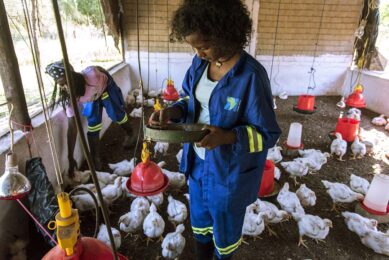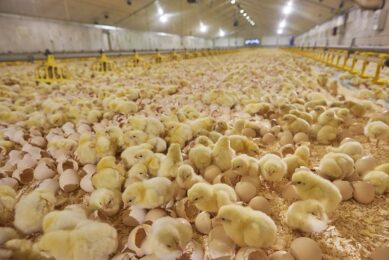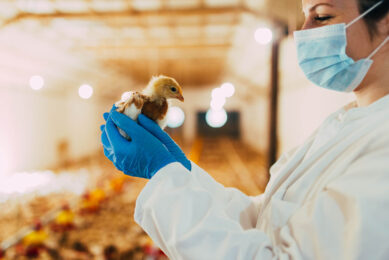Sweet and sour
Despite the ban on the use of antibiotic growth enhancers the livestock industry is still using large amounts of this product. Many veterinarians prescribe it as a so-called therapeutic drug, whether there is a need or not.
In recent shocking publications about an increasing number of people becoming resistant against an escalating amount of life threatening bacteria, fingers are being pointed at the poultry industry.
Of the patients with multi-resistance against antibiotics, 70% carry bacteria that produce an enzyme that blocks the function of antibiotics. This Extended Spectrum Beta-lactamase enzyme (ESBL) is widely found in chicken. Recent investigations showed that 8 out of 12 chickens presented in shops in Sevilla, Spain, carried ESBL. In shops in Pittsburgh, USA, 17 out of 20 chickens responded ESBL positive.
It is not yet known if these infections are the real cause of antibiotic resistance in humans, but it does make the poultry industry a suspect, again. Investigations regarding the genetic structure of ESBL in the Netherlands and the UK indicate that it is most likely that both the enzymes found in chicken and humans are the same.
A recent article in the Dutch Veterinary Journal says that the spray form of Ceftiofur is to be blamed. It activates bacteria to produce the enzyme that makes them resistant against, in particular, penicillin and cephalosporines, a family of antibiotics used against severe infections in humans. This results in an increasing number of people that suffer from E. Coli and Klebsiella pneumonia. At least 10% of these bacteria found in a Dutch hospital are ESBL positive, while 10 years ago this number was about 1%.
In the Netherlands there are thousands of people who are resistant against almost all antibiotics. In some parts of the EU some 50-80% of all gram-negative bacteria tested are resistant to almost all antibiotics. In India there are hospitals reporting 100% resistance against all bacteria. In South Africa there are people with untreatable tuberculosis sent home, because medical specialists can do nothing. If this is what is waiting for us, we have to act swiftly by stopping the systematical use antibiotics and initiating the development of a next generation of antibiotics for human use only.
In this respect the work of Italian researchers is of interest. They have developed a new strain of antibiotics that can be used as growth enhancer in poultry without the detrimental effects of current banned products. It is made from green algae and does not induce resistance or end up in the manure and environment, because they are completely broken down during digestion. Commercial trials indicate positive results in terms of production cost, volume and bird performance. It is to hope that this new finding is going to be a sweet solution for all livestock growers, which finally ends the sour critics about the massive use of antibiotic growth enhancers of the past.
Join 31,000+ subscribers
Subscribe to our newsletter to stay updated about all the need-to-know content in the poultry sector, three times a week. Beheer
Beheer








 WP Admin
WP Admin  Bewerk bericht
Bewerk bericht